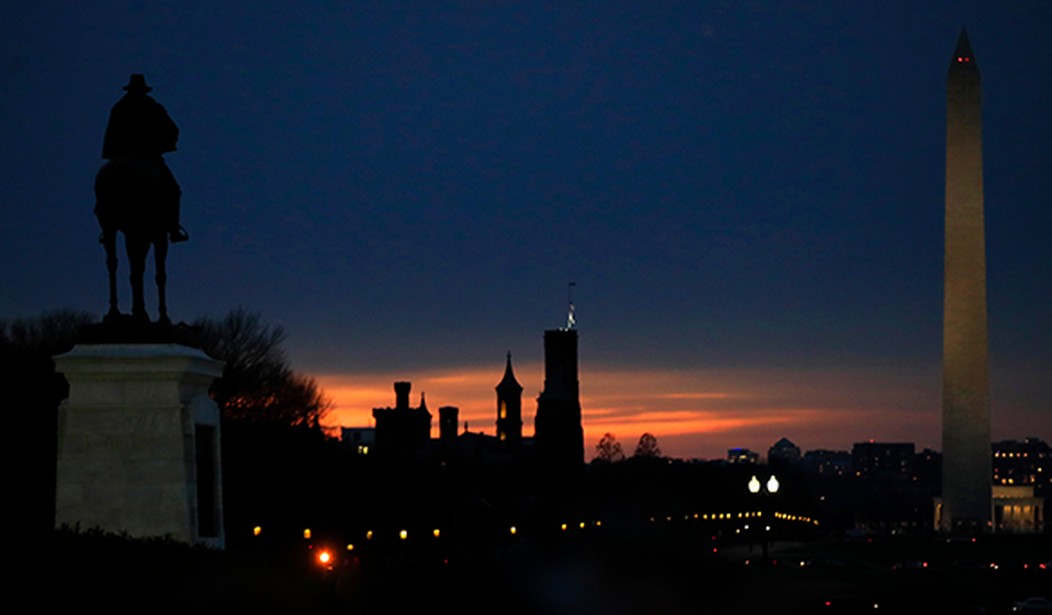Walk down Constitution Avenue in Washington, D.C., and one of the first things you’ll notice (besides the lack of access to public restrooms), is the sheer enormity of the buildings that line the street. Block after block, many of these titanic structures house federal agencies, all serving under the executive branch and ultimately reporting to the President.
While the founders devoted much time and ink to debating the powers of the President, what they failed to foresee was the rise of a permanent administrative state. Alexander Hamilton penned several essays explaining why the President’s power would be limited: he would be limited to four-year terms, subject to a vote by the public, and required to gain the consent of Congress for many of his policies. But federal agencies avoid many of these limitations. The agencies and their regulations remain in place regardless of who occupies the White House. Law professor Jonathan Turley has dubbed these agencies the “fourth branch of government.” Given the amount of power and autonomy federal agencies now hold, that title might be more than mere hyperbole.
The Founders intentionally delegated powers across the branches of government, because, as James Madison wrote, “accumulation of all powers, legislative, executive, and judiciary, in the same hands…may justly be pronounced the very definition of tyranny.” The Founders believed that by separating power, the three branches would act as checks upon each other—none wanting to give up its authority to another.
But the other branches have been all-too-willing to cede their power to federal agencies. This development almost certainly would come as a shock to the Founders. In fact, if the balance of power were to weigh in favor of any branch, the Founders expected Congress to come out on top. In Federalist 51, Madison wrote, regarding the ability of each branch of government to defend itself from actions by the others, that "it is not possible to give to each department an equal power of self-defense. In republican government, the legislative authority necessarily predominates." Today, there are few who would argue that Congress predominates in our government today.
Recommended
During Supreme Court Justice Bret Kavanagh’s confirmation hearings, Senator Ben Sasse maligned the transference of legislative power from Congress to the courts. But Congress has also surrendered power to federal agencies. Under the Administrative Procedure Act, Congress has granted agencies the authority to write the vast majority of federal laws. Federal agencies now pass thousands of laws each year. Senator Mike Lee noted that in 2014, Congress passed 3,291 pages of new legislation. That same year, executive agencies issued 79,066 pages of new regulations.
The Supreme Court, which many libertarians believe is the best hope for limiting state power, has also granted agencies wide latitude. In the 1984 case Chevron v. NRDC, the Court articulated the idea of administrative deference, in which federal agencies are given the power to interpret Congressional statutes affecting them. This ruling effectively freed agencies from any serious oversight by the courts. Justice Clarence Thomas has noted that Chevron deference—as this principle is now called—forces judges “to abandon what they believe is 'the best reading of an ambiguous statute' in favor of an agency’s construction.” Agencies have established their own courts to interpret such statutes. Professor Turley notes that a citizen is now 10 times more likely to be tried by an agency than by an actual court.
As with any government program, once an agency is granted a certain amount of power, it is extremely difficult to curb that power. Historian Robert Higgs has labeled this the “ratchet effect.” Government grows most during a crisis; it may reduce in size slightly once the crisis is over, but not to the same level as before the crisis. Even presidents who oppose regulation find it difficult to reverse this trend. President Trump has long advocated for deregulation, but a study of Trump’s first year in office showed that regulations were still growing, though the pace of growth has slowed. Every few years, a member of Congress introduces the REINS Act, which attempts to reduce regulations and reign in executive power. The Act has yet to be adopted.
The rise of administrators is not limited only to the government. As American society becomes more rule-based and litigation-worried, the administrative state is growing across industries, especially among highly-regulated sectors. The Goldwater Institute calculated that between 1993 and 2007, the number of full-time college administrators per 100 students at America’s top universities grew by 39 percent, while the number of employees engaged in teaching and research grew by only 18 percent. Bain & Co. found that the growth of administrative costs in colleges led to the usual problems associated with bureaucracy: redundancy, unneeded hierarchy, and misaligned incentives.
Healthcare, another highly-regulated industry, has faced a similar growth in administrators. The number of physicians in the United States grew 150 percent between 1975 and 2010, roughly in keeping with population growth, while the number of healthcare administrators increased 3,200 percent for the same time period. And these administrators are placing ever-higher burdens on healthcare costs. Studies suggest that administrative costs make up over 30 percent of the health care bill in the United States.
If American taxpayers—and American consumers—are serious about reducing unnecessary costs, we would do well to look closely at the growing bureaucracy across all segments of our society. Americans must be willing to resist the temptation of simply implementing new rules and regulations to solve every minor problem. Only through this change in mindset can government be restored to its constitutional limits.

























Join the conversation as a VIP Member